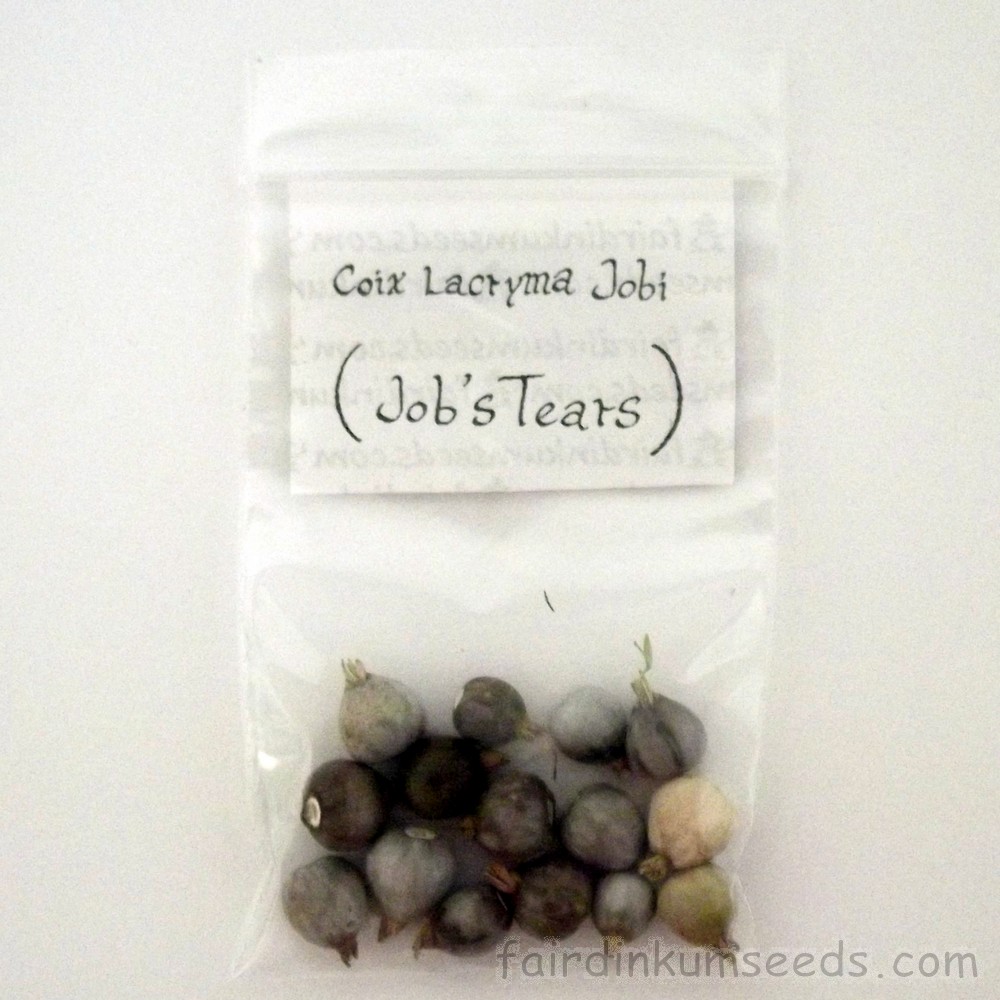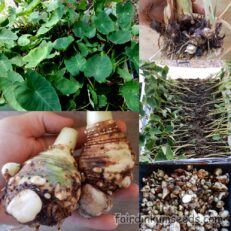Please read text!
Job’s Tears Coix Lacryma Jobi Seeds
Packet of 10+ seeds from this very unusual medicinal plant!
Traditionally this versatile plant has three main uses. The first is as a bead, the second as a food, and the third as a medicine, particularly as a cancer treatment.
Let’s start with the bead. It is used as rosary beads all around the world, even today.
Like many hard seeds, it has a long history of decorative use, but unlike every single other one, this fella comes pre-drilled ready to thread.
All the others need to be drilled, traditionally taking hours, days or weeks, but these seeds are actually a hollow bead shaped pod, and the “seed” is hiding in this shell.
They come in a few different natural colours, mostly black or dark purple, some grey, some white and a few a splotchy or striped combinations of all. They can be dyed, painted and polished and look really cool as is I reckon. Just pull them from the plant and thread them on a string.
Alrighty, that’s the ornamental, on to the edible.
Used as a staple food crop throughout Asia, particularly China, Korea and Japan.
Often called Chinese pearl barley, Adlay, Ma Yuen, St Mary’s tears, Yiren, Yimi, David’s tears, Saint Mary’s tears, Lacryma Christi, Christ’s tears, Tear drops or Coix Barley, it is used as a flour for baking breads deserts pastries, for making tea, or roasted in coffee like drinks and as a grain for making a heavenly broth, soups, stews, noodle and bean dishes.
They need to be simmered for a long time to be eaten whole, or cracked and husked first.
Most recipes call for cooking them whole for ages to flavour and thicken the broth, then remove the hard seeds and adding a small amount of vegetables, noodles or meat at the end. It is very nutritious and absolutely delicious, and the cooked seed contains an amazing 52% starch, 18% protein, 7% fat, which is much higher than rice and many other staple grains.
Alrighty, on to medicinal, and this is where it gets really interesting!
The Chinese have used it as a treatment for stroke, as a beauty tonic, particularly for women, and as a cancer treatment for ages, and now that long history of use is being taken seriously by big Pharma with several products being based solely on extractions of this amazing plant.
Way back in the 1950 a search for hidden active ingredients began. Initially it looked pretty standard for a grain crop. Lots of starchs and sugars, protein, amino acids, small amounts of several vitamins and minerals, nothing unexpected. This led researchers to focus solely on the oil part, which makes up ~6% of the dried seeds.
Hidden within this oil were the chemical components Coixol and Coixenolide!
An extract of the oil of coix has been developed and is being marketed in USA and China as an injection for cancer treatment and if you search the name Kanglaite there is lots of information out there regarding its potential.
Studies were done during the 90’s in China where it was used as a treatment for liver and lung cancer cases.
It has also been used along with standard anticancer protocols in an attempt to improve outcomes with some success. Other substances, such as polysaccharides, called coixans, have also been isolated from the coix seeds and are being investigated for potential medicinal use, such as possible hypoglycemic effects
Research suggests that Coixol is responsible for strong antispasmodic action, perhaps explaining the traditional use in treating spasmodic conditions, while coixenolide, which makes up less than 0.25% of the seed, is being looked into for its potential anti-neoplastic activity .
Coixol has also been shown to be an anti-inflammatory as well and animal studies suggest daily consumption of 30 grams or more of cooked coix seed over an extended period of time could provide many health benefits.
There you have it, pretty beads, great for a feed, and a potential cure all for whatever ails you.
Weediness.
While not classed as a prohibited or noxious weed in any state or territory in Australia, I have been informed that it has been a bit of a weed problem in Kyogle and Terania Creek in Northern NSW.
Please check with your local council regs before buying this species as it may be permitted on a state level, but prohibited to actually grow on a local council level.
It isn’t yet at the time of writing, but it may well be be later on down the track.
While it has not been observed to be spread by wildlife, the plant has been shown to spread quite well by the hard shelled seeds floating down stream, and with this dispersal method it has taken over the river bank in places.
For me here in sunny QLD it has never been an issue and I did not even believe that it could be weedy based on my own experiences. Without a regular water it dies here, and without protection the roos and wallabies eat it roots and all every time.
Just seemed like nonsense to me, and I didn’t take the comment seriously, but I now stand corrected.
In cooler moister climates make sure you keep an eye on it and definitely keep it away from river and creek banks.
Pots and garden beds only folks.
Grown by me and the Mrs organically, no chems, no nasties, no problems!!!






